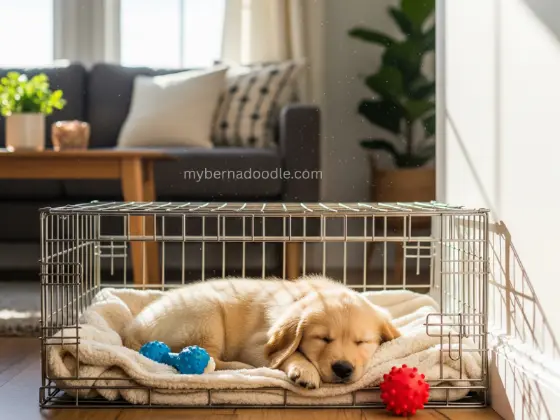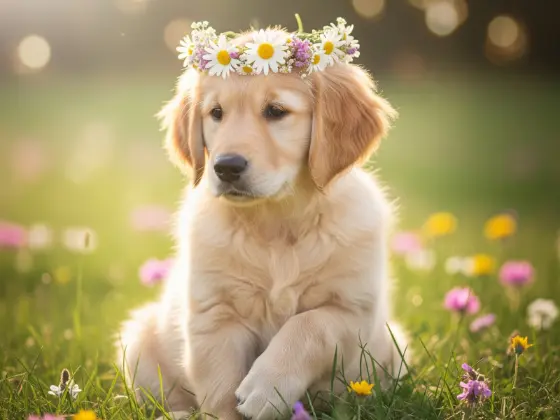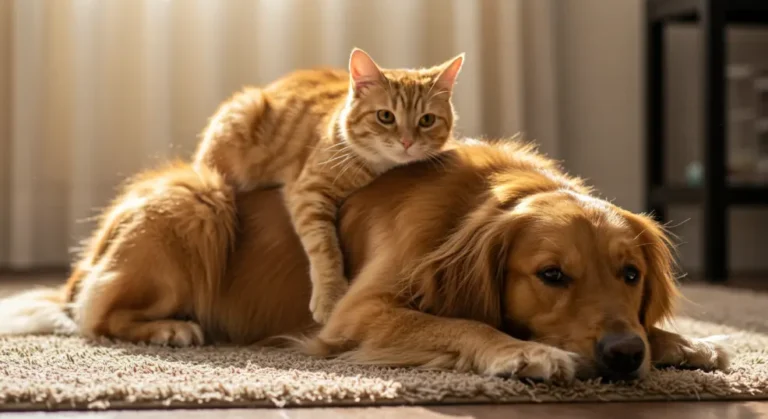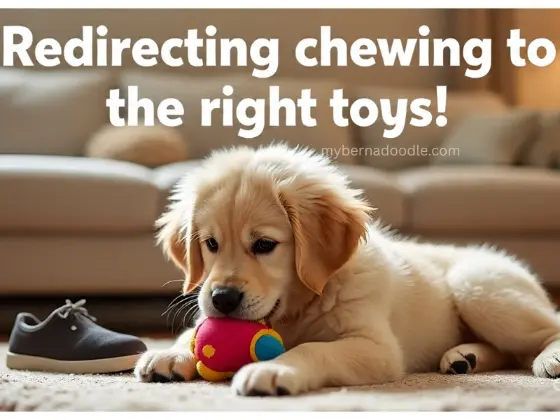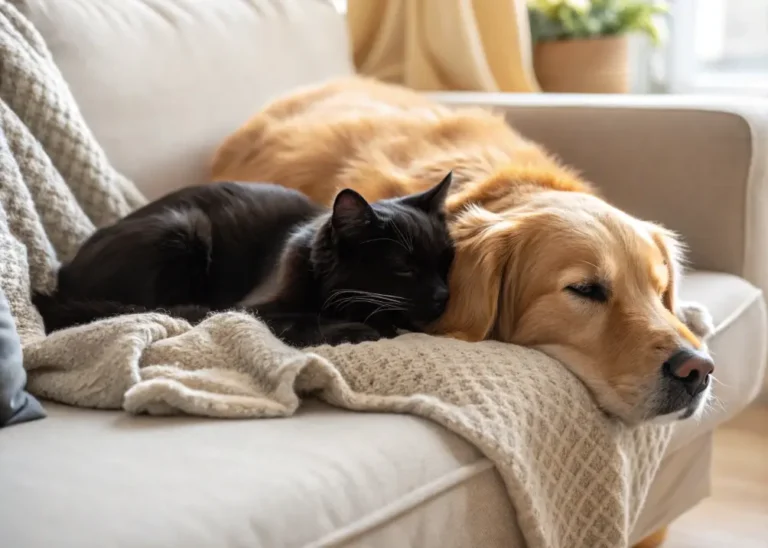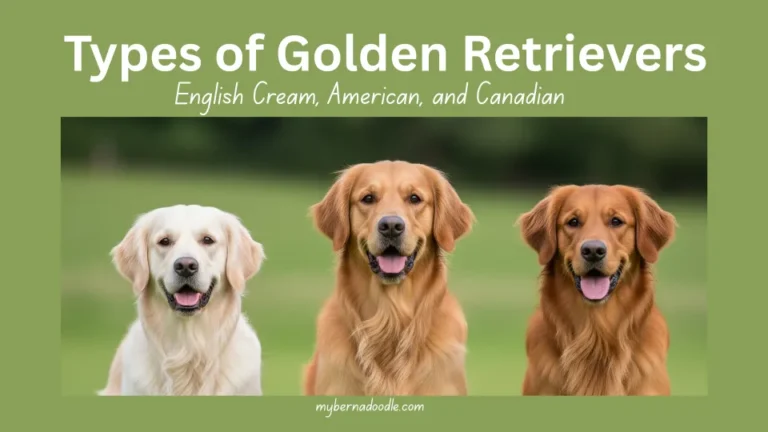How to Stop Your Golden Retriever Puppy from Jumping on Guests – Gentle & Effective Tips
Golden Retriever puppies are naturally exuberant and love to greet guests with enthusiastic jumps. While this shows their affection, it can be inconvenient or even risky as they grow into strong adults. This guide provides effective, positive reinforcement-based strategies to teach your Golden Retriever puppy to greet guests politely, keeping all four paws on the ground.
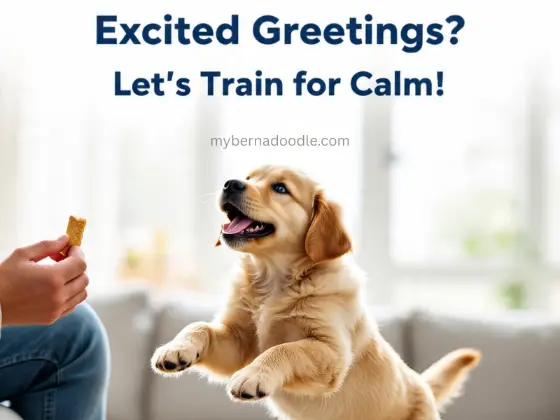
Why Golden Retriever Puppies Jump on Guests
Jumping is a puppy’s way of saying “Hello!” to new people, driven by their excitement and social nature. Golden Retrievers, being highly people-oriented, are especially prone to this behavior when guests arrive. Understanding that jumping is not defiance but enthusiasm helps you approach training with patience. The goal is to redirect this energy into calm, polite greetings.
Step-by-Step Guide to Stop Puppy Jumping on Guests
Step 1: Ignore the Jumping
- Why It Works: Golden Retrievers crave attention. By ignoring jumping, you teach your puppy that it doesn’t earn them the interaction they want.
- How to Do It:
- Instruct guests to turn away, cross their arms, and avoid eye contact or speaking when your puppy jumps.
- Wait for a moment when all four paws are on the ground, then have guests offer praise or a treat.
- If your puppy persists, have guests step back or walk away briefly to reset the interaction.
- Tip: Consistency is key—any attention (even a laugh or “Down!”) can accidentally reinforce jumping.
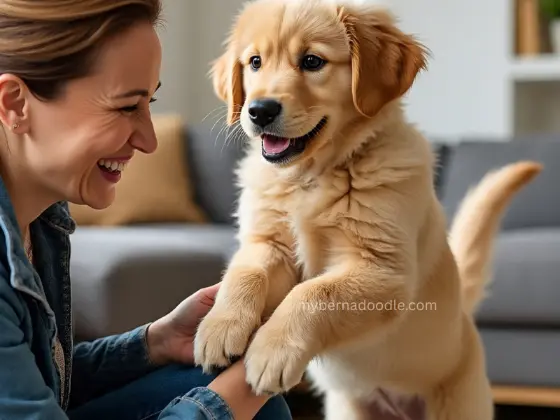
Step 2: Teach an Alternative Behavior
- Choose a Replacement: Train your puppy to sit as the default greeting behavior. Golden Retrievers are quick learners and respond well to clear cues.
- Training Steps:
- Practice “Sit” in a calm environment: Hold a treat above their nose, move it back until they sit, say “Sit,” and reward.
- Before guests enter, ask your puppy to sit and reward with high-value treats (e.g., small pieces of chicken or cheese).
- If they jump when guests approach, have guests pause, turn away, and wait. Reward immediately when your puppy sits.
- Pro Tip: Keep treats handy near the door for guests to use, reinforcing sitting as the way to earn attention.
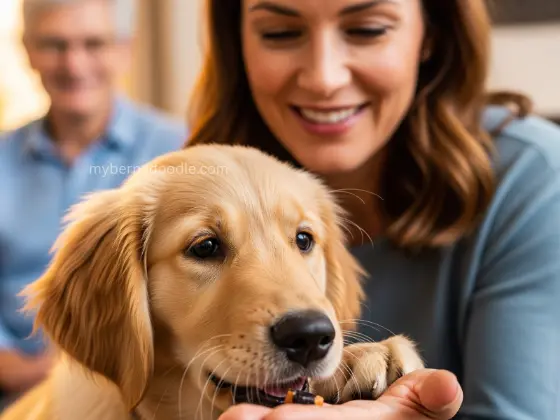
Step 3: Manage Guest Arrivals
- Set Up for Success: Golden Retrievers get especially excited when guests arrive, so control the environment to prevent jumping opportunities.
- Strategies:
- Leash Your Puppy: Keep them on a 6-foot leash when guests enter to gently guide them back to the ground if they jump. Hold the leash short but slack, avoiding tension.
- Inform Guests in Advance: Before guests arrive, explain the training plan: ignore jumping, reward sitting. Provide treats for guests to toss or hand out when your puppy is calm.
- Create a Barrier: Use a baby gate to separate your puppy from the entryway initially. Let them observe guests from a distance, rewarding calm behavior before allowing closer interaction.
- Practice Doorbell Scenarios: Ring the doorbell yourself (or have a helper) and ask for a sit before opening the door. Reward with treats or a toy (Goldens love fetch as a reward!).
- Tip: If your puppy is too excited, take them for a 10-minute walk or play session before guests arrive to burn off excess energy.
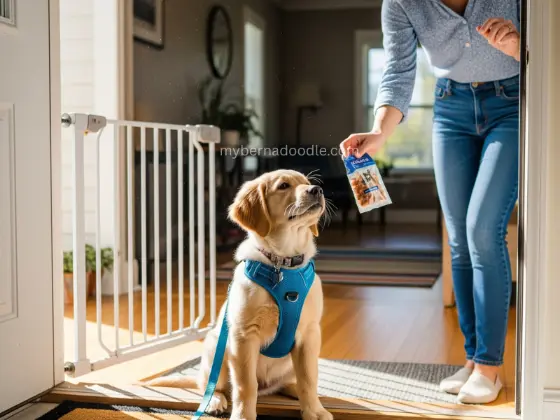
Step 4: Redirect Excitement Before Guests Arrive
- Why It Helps: Golden Retriever puppies have high energy, and jumping often stems from pent-up excitement. Pre-emptively tiring them out reduces impulsive behavior.
- Activities:
- Physical Exercise: Provide 5 minutes of exercise per month of age, twice daily (e.g., 20 minutes for a 4-month-old). Try fetch, tug, or a short walk (avoid over-exercising to protect growing joints).
- Mental Stimulation: Use puzzle toys, treat-dispensing balls, or a quick training session (e.g., practicing “sit” or “down”) to engage their sharp minds.
- Example: 15 minutes before guests arrive, play a game of fetch in the backyard or hide treats for a scent game to channel their energy.
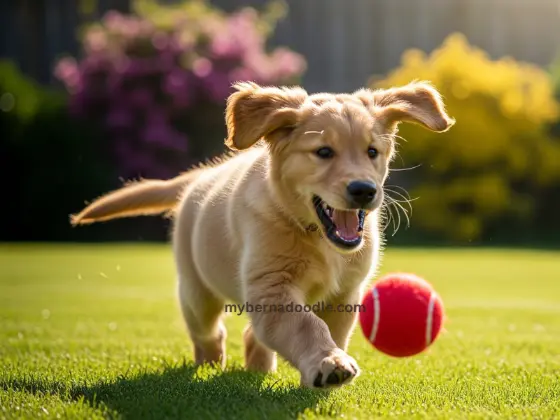
Step 5: Train with Guest Simulations
- Practice Makes Perfect: Simulate guest arrivals to desensitize your puppy to the excitement of visitors.
- How to Do It:
- Enlist a friend or family member to act as a “guest.” Have them knock or ring the doorbell, enter, and follow the ignore-jumping/reward-sitting protocol.
- Start with one person, then gradually increase to multiple “guests” to mimic real-life scenarios.
- Practice in short sessions (5–10 minutes) 2–3 times daily, rewarding calm greetings with treats or a favorite toy.
- Pro Tip: Vary the “guests” (e.g., people with hats, coats, or bags) to generalize the behavior, as Goldens may jump more on unfamiliar-looking visitors.
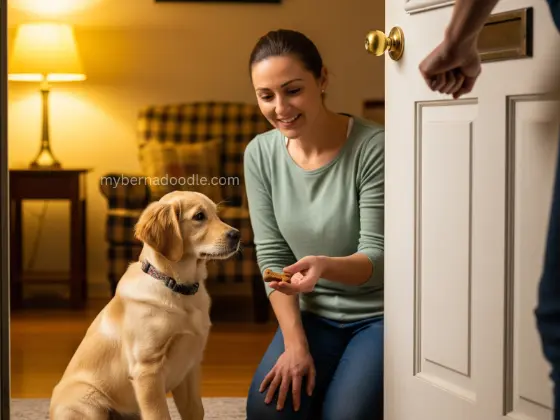
Step 6: Use Positive Reinforcement
- Reward Calm Behavior: Golden Retrievers are eager to please and respond best to rewards. Always reward when your puppy sits or stays calm during guest greetings.
- Use high-value treats, enthusiastic praise, or a toy (e.g., a squeaky ball for retrieving, a Golden favorite).
- Reward within 1–2 seconds of the desired behavior to reinforce the connection.
- Avoid Punishment: Yelling, pushing, or kneeing your puppy can confuse or scare them, undermining their trust. Goldens are sensitive and thrive on positive methods.
Image Idea: A close-up of a Golden Retriever puppy receiving a treat from a smiling owner, with a guest in the background. Add a speech bubble: “Good job staying calm!”

Step 7: Handle Real Guest Scenarios
- Gradual Exposure: Start with low-energy guests (e.g., calm adults) before introducing more exciting ones (e.g., kids or loud friends).
- Keep your puppy leashed during initial real guest visits to maintain control.
- Ask guests to wait until your puppy is sitting before petting or engaging.
- Party Situations: For larger gatherings, consider crating your puppy with a chew toy initially or keeping them in a separate room until the excitement settles. Gradually introduce them, rewarding calm behavior.
- Door Management: If your puppy bolts or jumps when the door opens, practice “wait” at the door: ask for a sit, open the door slightly, and close it if they move. Reward for staying put.
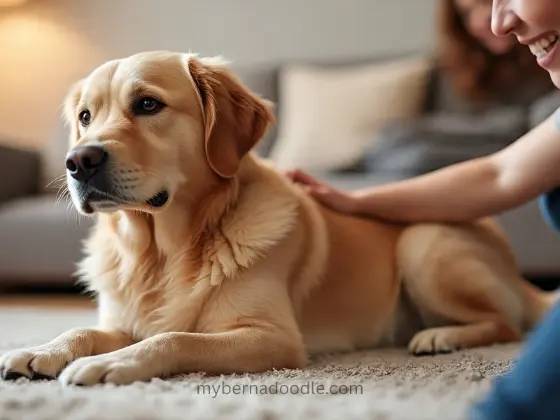
Step 8: Be Consistent and Patient
- Household Agreement: Ensure everyone (family, roommates, guests) follows the same rules—ignore jumping, reward sitting. Inconsistent responses confuse your puppy.
- Expect Setbacks: During adolescence (6–18 months), your Golden may test boundaries, especially with guests. Reinforce training calmly.
- Timeline: With daily practice, most Golden Retriever puppies show improvement in 2–4 weeks, but full reliability with guests may take months, especially in high-energy situations.
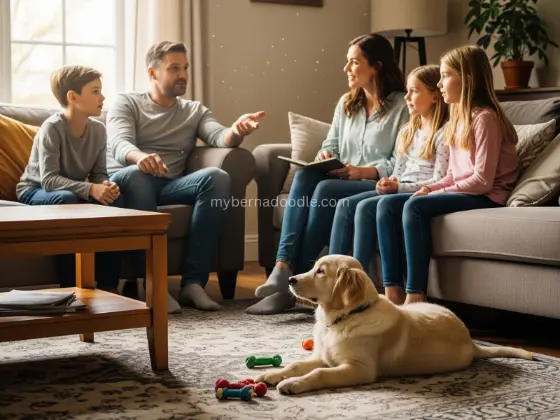
Common Mistakes to Avoid
- Rewarding Jumping Accidentally: Guests who pet or laugh when your puppy jumps reinforce the behavior. Politely guide guests to follow your plan.
- Skipping Pre-Arrival Exercise: An under-stimulated Golden is more likely to jump due to excess energy.
- Inconsistent Rules: If some guests allow jumping, your puppy will struggle to learn the expected behavior.
- Getting Frustrated: Stay calm, as Goldens are sensitive to your emotions. If you’re overwhelmed, take a break and try again.
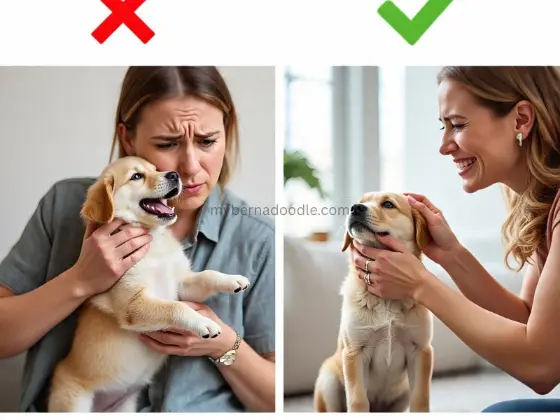
Additional Tips for Golden Retrievers
- Leverage Their Play Drive: Use fetch or tug as a reward for calm greetings. For example, toss a ball only when they sit for guests.
- Socialization Reduces Excitement: Expose your puppy to various people (safely, until fully vaccinated at 16 weeks) to make guest arrivals less novel and exciting.
- Consider Puppy Classes: A puppy kindergarten can teach your Golden to stay calm around new people. Look for trainers using positive reinforcement (e.g., CPDT or KPA certified).
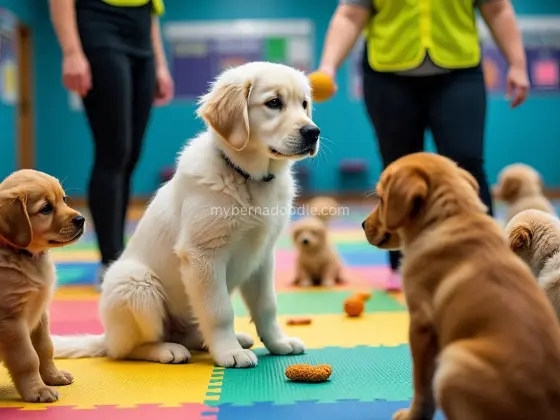
When to Seek Help
If your puppy’s jumping on guests persists despite consistent training, or if it’s paired with other issues (e.g., over-excitement escalating to nipping), consult a professional:
- Certified Trainer: Find one via the American Kennel Club (akc.org) or Karen Pryor Academy (karenpryoracademy.com).
- Behaviorist: For complex cases, a veterinary behaviorist can assess underlying issues (find one at dacvb.org).
- Vet Check: Rule out health issues that might contribute to excessive excitement or impulsivity.
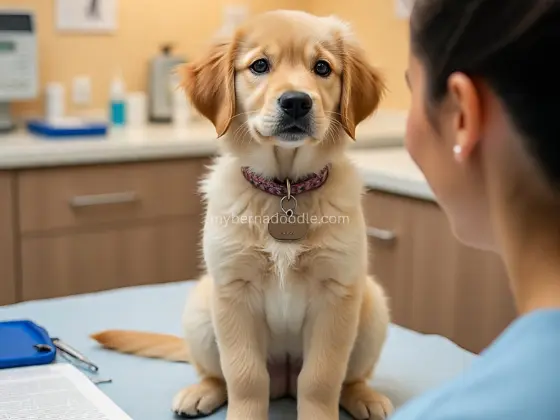
Sample Training Plan (1 Week)
- Day 1–2: Practice “Sit” in a calm room (5-minute sessions, 2–3 times daily). Ignore jumping during mock greetings with a family member, reward sitting.
- Day 3–4: Simulate guest arrivals with a helper. K eep your puppy on a leash, have the helper enter, ignore jumping, and reward sitting.
- Day 5–6: Invite a calm guest, keep your puppy leashed, and reward calm greetings. Play fetch for 10 minutes beforehand to reduce energy.
- Day 7: Practice doorbell scenarios with a friend. Ask for a sit before opening the door, rewarding with treats or a toy.
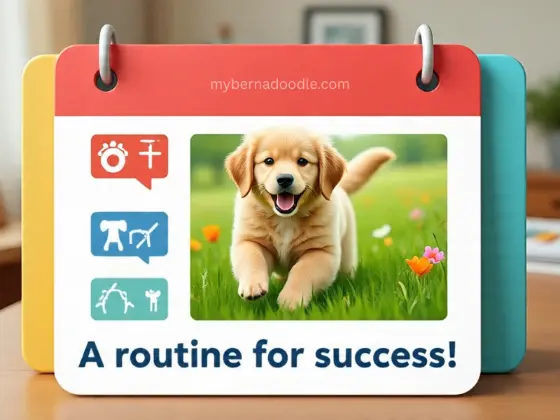
Why It Works for Golden Retrievers
Golden Retrievers are highly trainable due to their intelligence and desire to please. By redirecting their excitement, rewarding calm behavior, and managing guest interactions, you’ll teach your puppy that polite greetings earn attention. Consistency, patience, and positive reinforcement will transform your enthusiastic Golden into a well-mannered host.
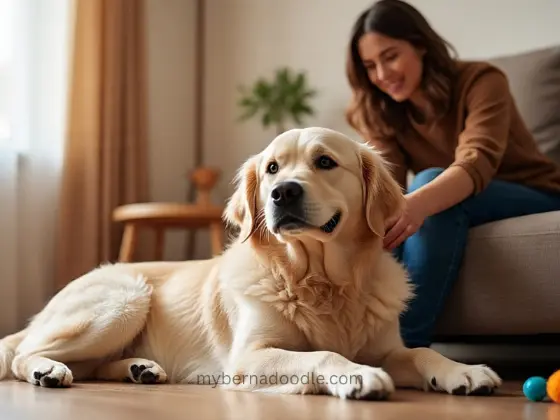
Resources
- Books: “The Power of Positive Dog Training” by Pat Miller or “Puppy Start Right” by Kenneth and Debbie Martin.
- Online: Check YouTube channels like Zak George or Kikopup for videos on polite greetings.
- Local Classes: Search for positive reinforcement trainers via akc.org or karenpryoracademy.com.
Happy training, and enjoy your Golden Retriever’s journey to becoming a polite greeter!
Looking for more Golden Retrievers tips? Explore our blog for guides, advice, and adorable insights!
The Ultimate Guide to Golden Retrievers: History, Traits, Stats, and FAQs
35+ Golden Retriever FAQs Every Owner Should Read!
Puppy Training Guide for Golden Retrievers: Step-by-Step Tips
Golden Retriever Aggression: Causes, Prevention, and Facts (2025)
Do Golden Retrievers Bark a Lot? Understanding Their Barking Habits

